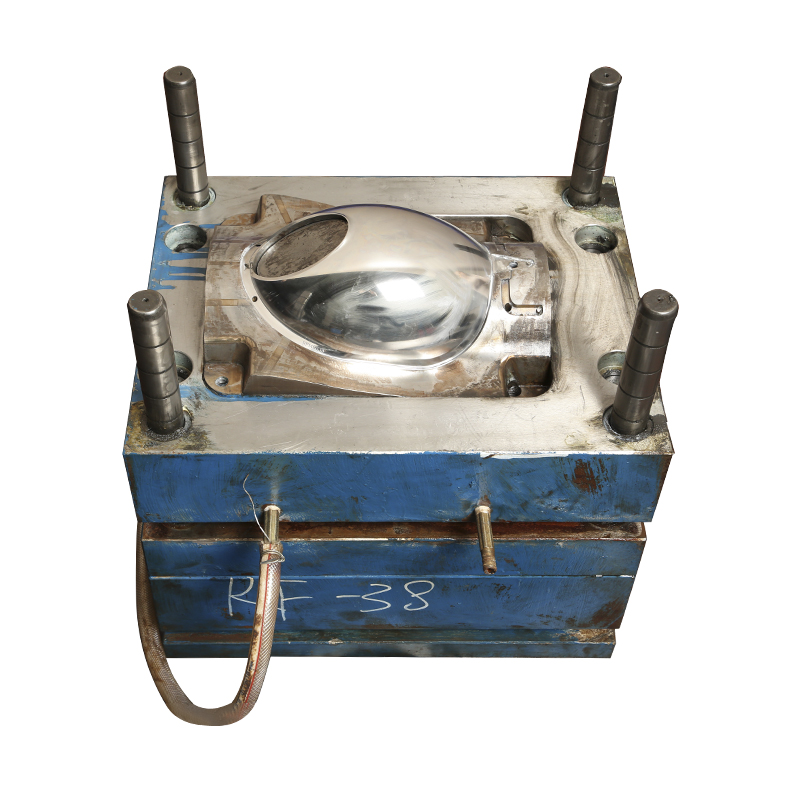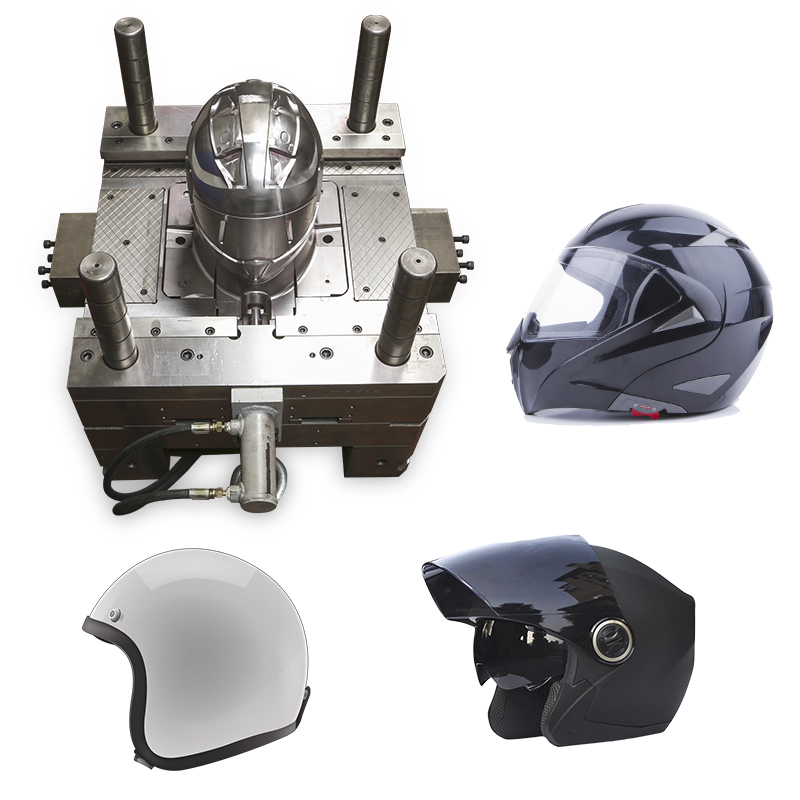In the rapidly evolving world of manufacturing, injection molding and 3D printing have emerged as two dominant technologies for creating parts and products. While both methods can produce high-quality components, their processes, costs, scalability, and applications differ significantly. Understanding the difference between injection molding and 3D printing helps engineers, product designers, and businesses choose the best approach for their specific production needs.
Injection Molding
Injection molding is a traditional manufacturing process in which melted thermoplastic material is injected into a steel or aluminum mold under high pressure. Once the plastic cools and solidifies, the mold opens, and the finished part is ejected. This process is widely used in mass production for industries like automotive, consumer electronics, medical devices, and packaging.
Key advantages of injection molding:
● High production efficiency: Ideal for large-volume manufacturing.
● Excellent surface finish and dimensional accuracy: Produces consistent and durable parts.
● Wide material selection: Compatible with a range of plastics and composites.
Injection molding has high upfront tooling costs, making it less suitable for small-batch or prototype production. The molds can cost thousands of dollars to design and machine, but the cost per part drops significantly when producing large quantities.
Injection Mold - Motorcycle Helmet Shell Plastic Mold
3D Printing
3D printing, also known as additive manufacturing, is a process that builds objects layer by layer from digital 3D models. Common technologies include Fused Deposition Modeling (FDM), Selective Laser Sintering (SLS), and Stereolithography (SLA). Instead of injecting molten material into a mold, 3D printers deposit or fuse material precisely where needed, enabling complex geometries and rapid prototyping.
Key advantages of 3D printing:
● Design flexibility: Allows intricate shapes and internal structures that are impossible with molding.
● Low initial cost: No need for expensive molds or tooling.
● Rapid prototyping: Perfect for testing designs before mass production.
● On-demand production: Reduces waste and storage costs.
3D printing is slower than injection molding and typically more expensive per part when scaling up production. Surface finish and material properties may also vary depending on the printer and process used.
Key Differences Between Injection Molding and 3D Printing
|
Aspect |
Injection Molding |
3D Printing |
|
Production Volume |
Best for mass production |
Best for low-volume or prototypes |
|
Initial Cost |
High (due to tooling) |
Low (no molds required) |
|
Speed per Part |
Very fast once setup |
Slower, layer-by-layer |
|
Material Range |
Broad, includes high-performance plastics |
Growing but still limited |
|
Design Complexity |
Limited by mold design |
Nearly unlimited |
|
Surface Finish |
Smooth and consistent |
May require post-processing |
|
Scalability |
Extremely scalable |
Limited scalability |
The main difference between injection molding and 3D printing lies in their scalability and cost structure. Injection molding excels in producing thousands or millions of identical parts at low per-unit costs, while 3D printing shines in flexibility, customization, and small-batch production.
When to Use Injection Molding vs. 3D Printing?
Choose injection molding if:
● You need to produce large quantities of identical parts.
● High strength, durability, and surface quality are critical.
● The upfront cost of tooling can be justified over many units.
Choose 3D printing if:
● You are creating prototypes or small production runs.
● You need design freedom for complex geometries.
● You want to reduce lead time and avoid expensive tooling.
Many manufacturers now combine both technologies—using 3D printing for rapid prototyping and injection molding for mass production once the design is finalized. This hybrid approach reduces development time and optimizes overall production efficiency.
The Future of Manufacturing
As 3D printing materials and technologies continue to evolve, the gap between injection molding and 3D printing is narrowing. High-speed additive manufacturing systems and stronger printable polymers are making 3D printing a viable alternative for small to medium-scale production. Meanwhile, injection molding remains the go-to method for high-volume, cost-efficient manufacturing.
Ultimately, the choice depends on your production volume, budget, material requirements, and design complexity. Understanding both technologies allows manufacturers to innovate smarter and produce better products faster.
FAQ: Injection Molding vs 3D Printing
1. What is the main difference between injection molding and 3D printing?
The main difference lies in their manufacturing approach. Injection molding involves injecting molten plastic into a mold to form parts, while 3D printing builds objects layer by layer from digital models. Injection molding is ideal for mass production, whereas 3D printing is better suited for prototyping and small-batch manufacturing.
2. Which is more cost-effective: 3D printing or injection molding?
For small quantities or prototypes, 3D printing is more cost-effective because it doesn't require expensive tooling. However, when producing thousands of parts, injection molding becomes more economical due to its low per-unit cost after the mold is made.
3. Can 3D printing replace injection molding in manufacturing?
Not entirely. While 3D printing is revolutionizing product development and rapid prototyping, injection molding remains superior for high-volume production, durability, and surface quality. Many companies use both technologies together for faster design-to-market workflows.
4. What materials are used in injection molding and 3D printing?
Injection molding typically uses thermoplastics like ABS, polypropylene (PP), and nylon.
3D printing supports materials such as PLA, ABS, PETG, resins, and even metals or composites, depending on the printer type. Material choices impact strength, flexibility, and application suitability.
5. Is 3D printing faster than injection molding?
It depends on the production scale. 3D printing can produce prototypes quickly, often within hours. However, for mass production, injection molding is much faster once the mold is ready, as it can produce thousands of identical parts in a short time.
6. Which method produces higher-quality parts?
Injection molding generally delivers better surface finish, dimensional accuracy, and consistency, making it ideal for end-use consumer products. 3D printing quality has improved significantly, but parts may require post-processing for smooth finishes or precise tolerances.
7. When should I choose 3D printing over injection molding?
Choose 3D printing if you need:
● Fast prototypes or short production runs.
● Complex or customized designs.
● Lower upfront investment.
● Opt for injection molding when you need large quantities, tight tolerances, and durable materials.
8. Can injection molding and 3D printing be combined?
Yes. A common approach is to 3D print prototypes for testing and design validation, then move to injection molding for large-scale production. This hybrid method reduces development time and overall manufacturing costs.
9. What are the environmental differences between the two methods?
3D printing tends to generate less waste since it's an additive process, building only what's needed. Injection molding, a subtractive process, can waste material during mold creation but is more efficient in large-scale production. Material recyclability also plays a role in sustainability.
10. Which process is better for startups or small businesses?
For startups and small-scale production, 3D printing is typically better due to its low initial cost and flexibility. As demand grows, transitioning to injection molding can help reduce per-part costs and improve scalability.
Conclusion
The difference between injection molding and 3D printing is not just about the process—it's about production strategy. Injection molding offers efficiency and scalability, while 3D printing provides flexibility and innovation. By leveraging the strengths of both, you can achieve faster time-to-market, lower costs, and greater design freedom in modern manufacturing.


.jpg)

.jpg)